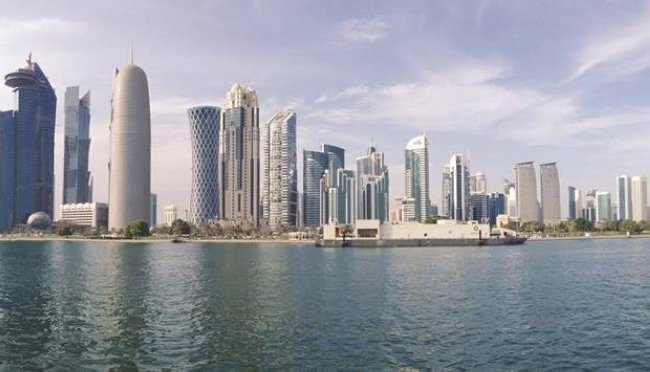Geopolitics aside, fluctuations in oil and gas prices have dampened the pace of domestic activity and the impact of the pandemic exacerbated this.
“But the government’s strong fiscal position compared with its GCC peers infrastructure spending, and ongoing benefits for public sector workers likely cushioned demand growth, helped by elevated oil and gas prices,” Oxford Economics noted.
According to the researcher, Qatar’s overall economic risk score of 3.1 (ranked by Oxford Economics) is “well below” the Middle East-North Africa average of 5.2 and places Qatar 19th out of the 164 countries in its ranking.
The economy’s pace of growth has cooled since 2012, initially due to the moratorium on the North Field gas expansion, lower oil prices, and the associated fiscal austerity since 2014.
Although the economy contracted in 2019-2020, it surpassed its pre-pandemic level in 2022 as growth recovered solidly.
“The pace of growth eased in 2023 following the World Cup but is now picking up again, with a stronger rise expected in 2026-2027 as additional LNG capacity comes online,” Oxford Economics said.
The market demand risk score of 4.0 is below the Mena average of 5.5, reflecting Qatar’s high per capita income, large government reserves, and lack of overheating.
The end of the GCC diplomatic dispute has supported demand, investment, trade, and project implementation, as well as the flow of people.
The market cost risk score is 4.0, below the regional average of 5.4, reflecting contained inflationary pressures, a credible US dollar peg, and extremely high GDP per capita.
After inflation turned negative in 2020, it climbed to 2.3% in 2021 and 5% in 2022 amid rising global food and energy prices and increasing demand in the run-up to the World Cup.
Inflation subsided to an average of 3% in 2023 and 1.1% last year. But the researcher thinks it will rise to 2% in the medium term.
Under Oxford Economics’ methodology, the exchange rate risk score is now 1.5, slightly up on six months ago but well below the Mena average of 4.1.
The Qatari riyal is pegged to the US dollar at QR3.64, and the researcher sees a negligible chance of de-pegging in the near to medium term.
The low risk score reflects the authorities’ long-standing commitment to the dollar peg, as well as large foreign exchange reserves.
Risk rose when the current account shifted into deficit in 2020. But the score improved in 2021 as the current account shifted back to surplus as exports recovered and oil and gas prices rebounded from the 2020 lows.
The surpluses have been wide since, firmly in double digits. The researcher projects a surplus of 16.4% of GDP this year, down from 17.4% last year.
Qatar’s sovereign credit risk score under the researcher’s data-driven methodology is 2.9, well below the Mena average of 4.7.
The score reflects high per capita incomes, large government reserves, strong external finances, and political stability, it said.
The budget deficit in 2017 was temporary, returning to a surplus in 2018, but began to narrow again in 2019 and, due to the slump in oil and gas prices, moved into a deficit of 2% of GDP in 2020.
The balance returned to a small surplus in 2021and has remained in positive territory since.
“We estimate a surplus of 2.8% of GDP this year, up from 0.7% in 2024, which marked the weakest annual outturn since 2021,” Oxford Economics noted.
The country’s trade credit risk – a measure of private sector repayment risk – is very low by regional standards at 3.0, compared with the regional average of 6.1.
“The main factors underpinning this rating are macroeconomic stability, the credible and well-established exchange rate regime, robust growth, extremely high GDP per capita, and a healthy, well-developed banking sector.
“Higher oil prices will likely support bank liquidity, despite rising exposure to construction and real estate and persistent foreign funding risk,” the researcher noted.







